Whether you’re a horticulturist or a casual nature-lover, the trees of Damyang, South Korea are as famous as they are beautiful. Damyang is a small town located northeast of Gwangju Metropolitan City and is a perfect escape from the big city to something more natural. After moving away from Seoul to the southern province of Jeollanam-do, Damyang was one of the first cities we visited and it was like a breath of fresh air. While living in major cities can be endlessly exciting and full of opportunity, we found ourselves longing for natural beauty that is often far away from heavily populated areas. So, as an indicator of “things to come,” Damyang was as accurate of our year to come as it was the perfectly beautiful setting of our return to nature.
Damyang is known for two very different types of trees: bamboo and sequoias. These massive living goliaths surround you with their towering beauty as you stroll along the forest pasts, and offer a wonderful place to reflect. Both of these trees are very different and their parks reflect are entirely different.
1. Bamboo
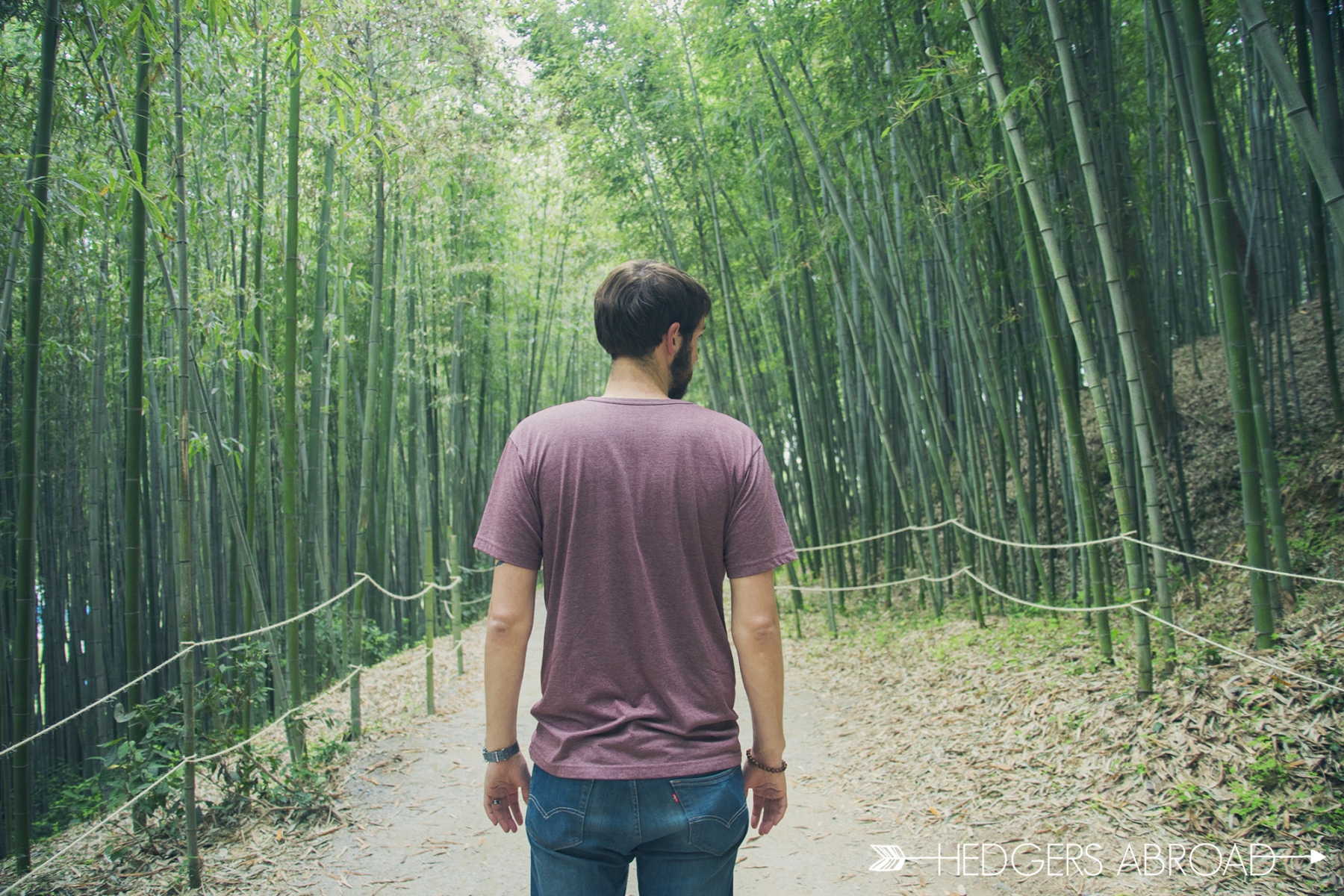
Easily the one of the most famous forests in South Korea, Juknokwon (죽녹원, or literally “Bamboo Garden”) is a large park with… a large bamboo garden. With paths winding through this forest, we see this grove of bamboo trees as a legitimate rival to Arashiyama Bamboo Forest in Kyoto. Spectacularly beautiful and larger than its more-famous brother forest in Japan, Juknokwon was originally a garden meant for contemplation and rest for the Confucian School located on the far side of the garden. A leisurely walk through this forest is spectacularly calming. Surrounded by bamboo on all sides, visitors are immersed into a different world once you’re past the gate. For a meager 2,000KRW ($2), you have access to both the forest and the school in the rear which we will discuss later. Beautifully situated on the side of a hill and next to a wonderfully lively river, Juknokwon is a must-see attraction in Damyang.

Bonus: a smaller bamboo grove, 담양대나무숲 – 담양습지 is located along a river in the form of a marsh. Not as common, we’ve heard this park is also nice and less trafficked.
2. Metasequoia Road
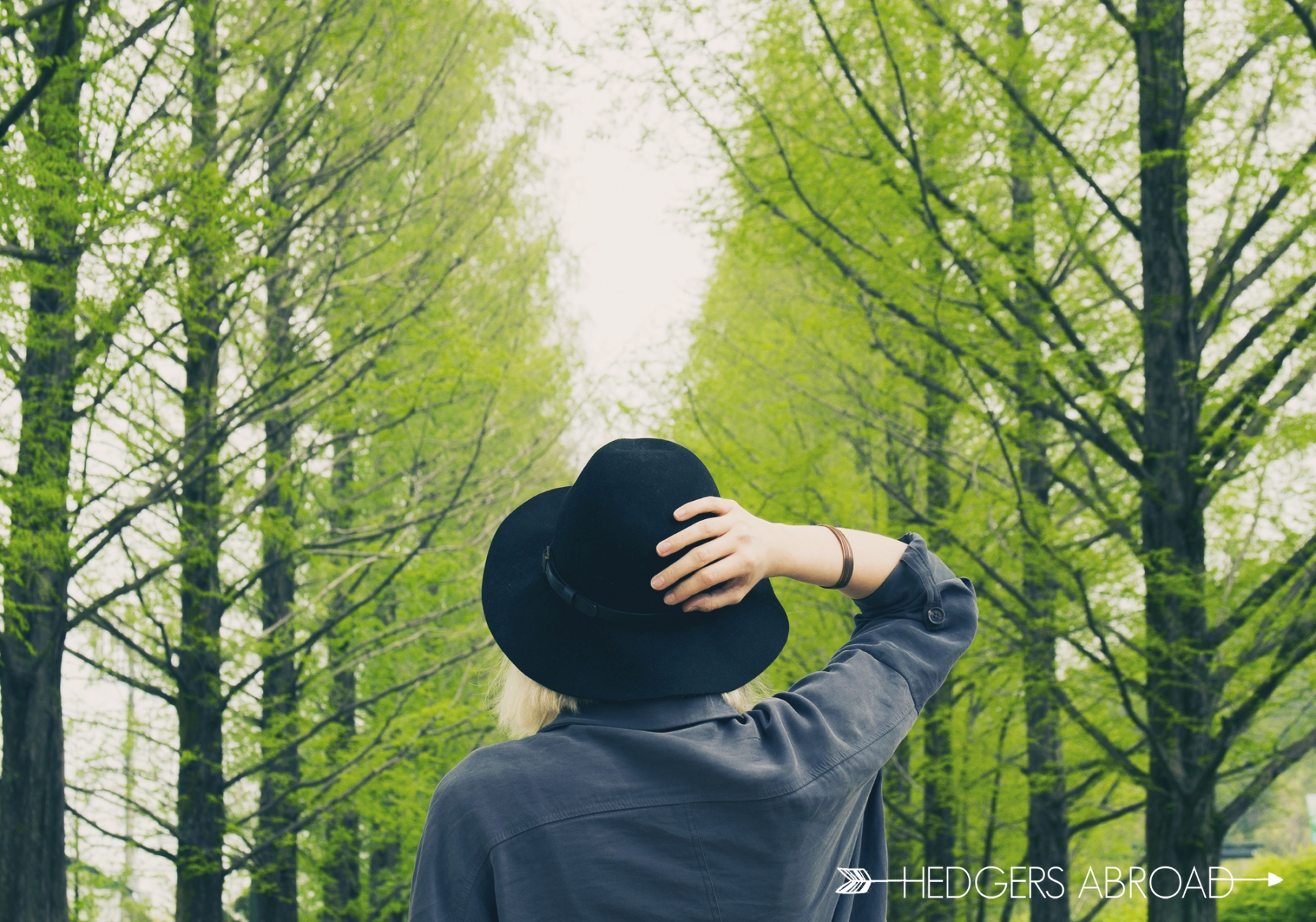
While not generally associated with Asian flora, these hard redwoods create an impressive landscape around their walking-path park. Reaching high into the sky, these fast-growing hardwoods establish an impressive landscape that is breathtaking. We had originally expected to be underwhelmed, but we were terrifically wrong and had a really great time. With ice-cream in hand, we wandered the metasequoia road for several hours, stopping periodically to sit on benches and watch people enjoying the park in their own ways. Although heavy with foot traffic, we found the park’s population less obtrusive than in many others and we attributed this to the immense stature of the trees. Engulfed in the blissful calm of natural beauty, the intermittent crowds seemed to disappear for long stretches and we all became people enjoying the same breathtaking things.
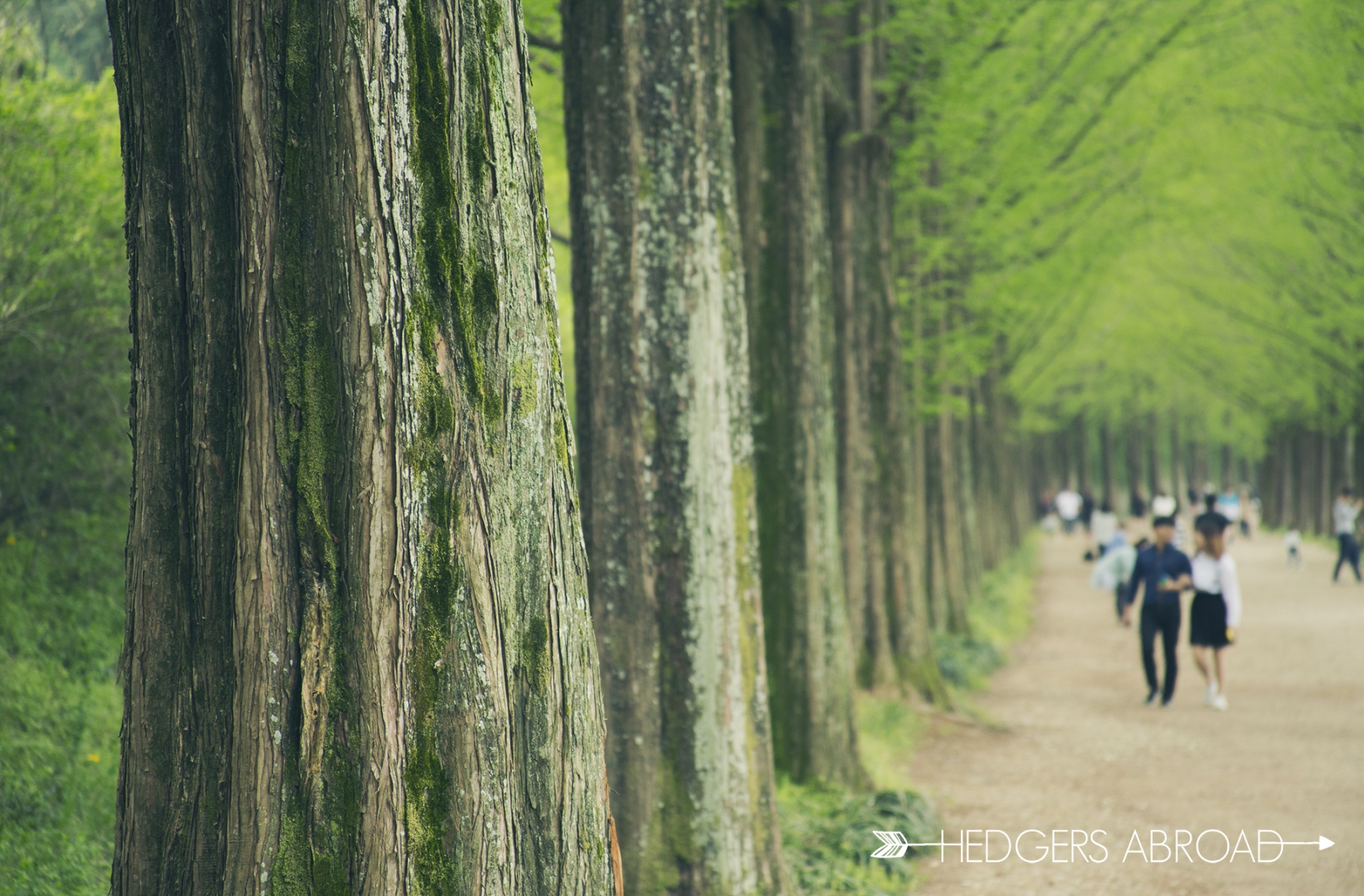
3. Meta Provence Town
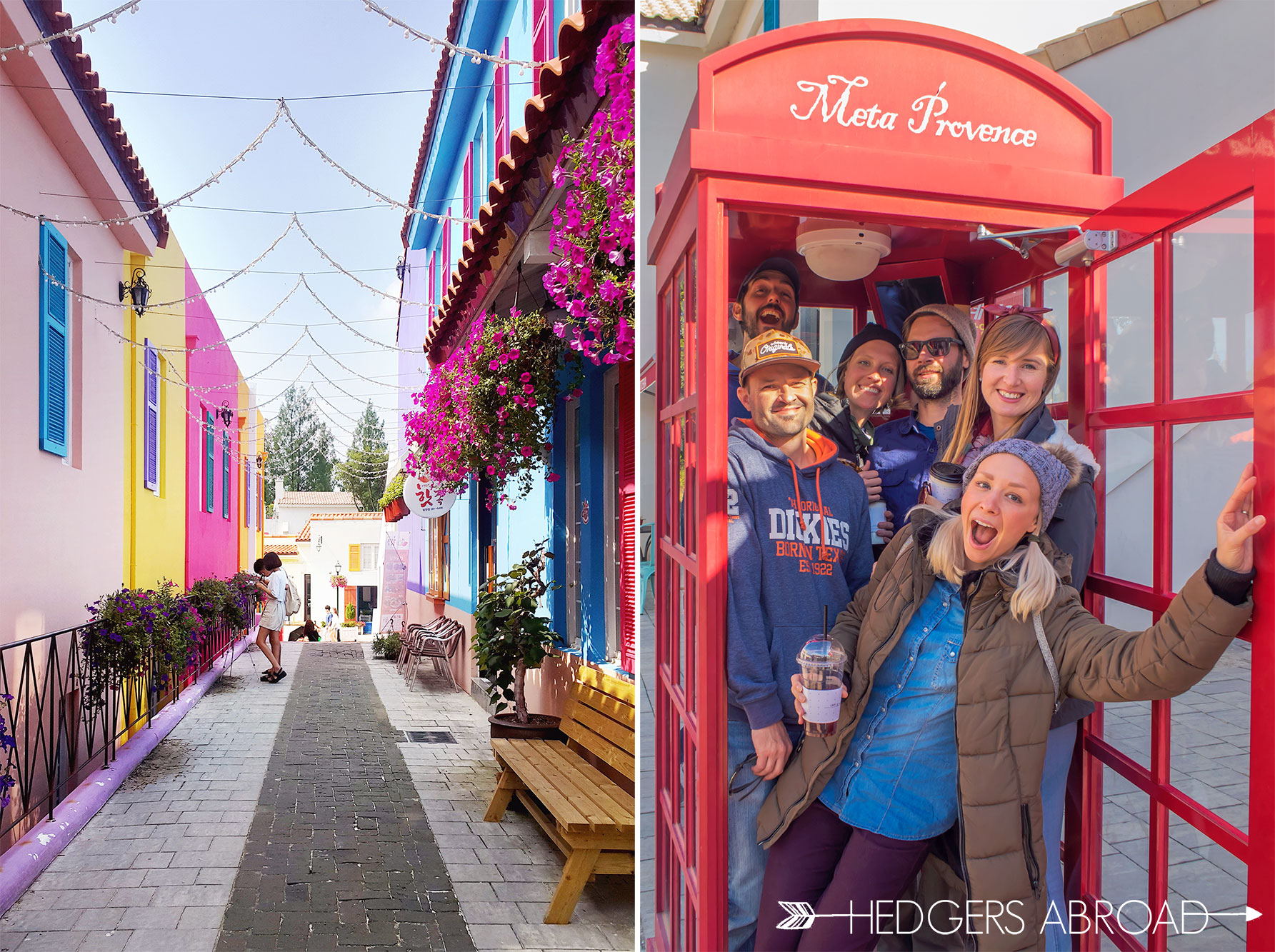
After enjoying the towering trees of the Metasequoia Road, be sure to rest your legs at the Meta-Provincial Town across the street. This whimsical “town” is an eclectic concoction of world culture, shopping, art, and food. Hosting a multitude of surprising and sometimes confusing genres mixed together, this town can be enjoyed by visitors both young and old. The Metasequoia Road and Meta-Provincial Town make for a wonderful outing for anyone’s taste and are both playfully opposite the street from each other and opposites in conception.
4. Hyanggyo Confucian School
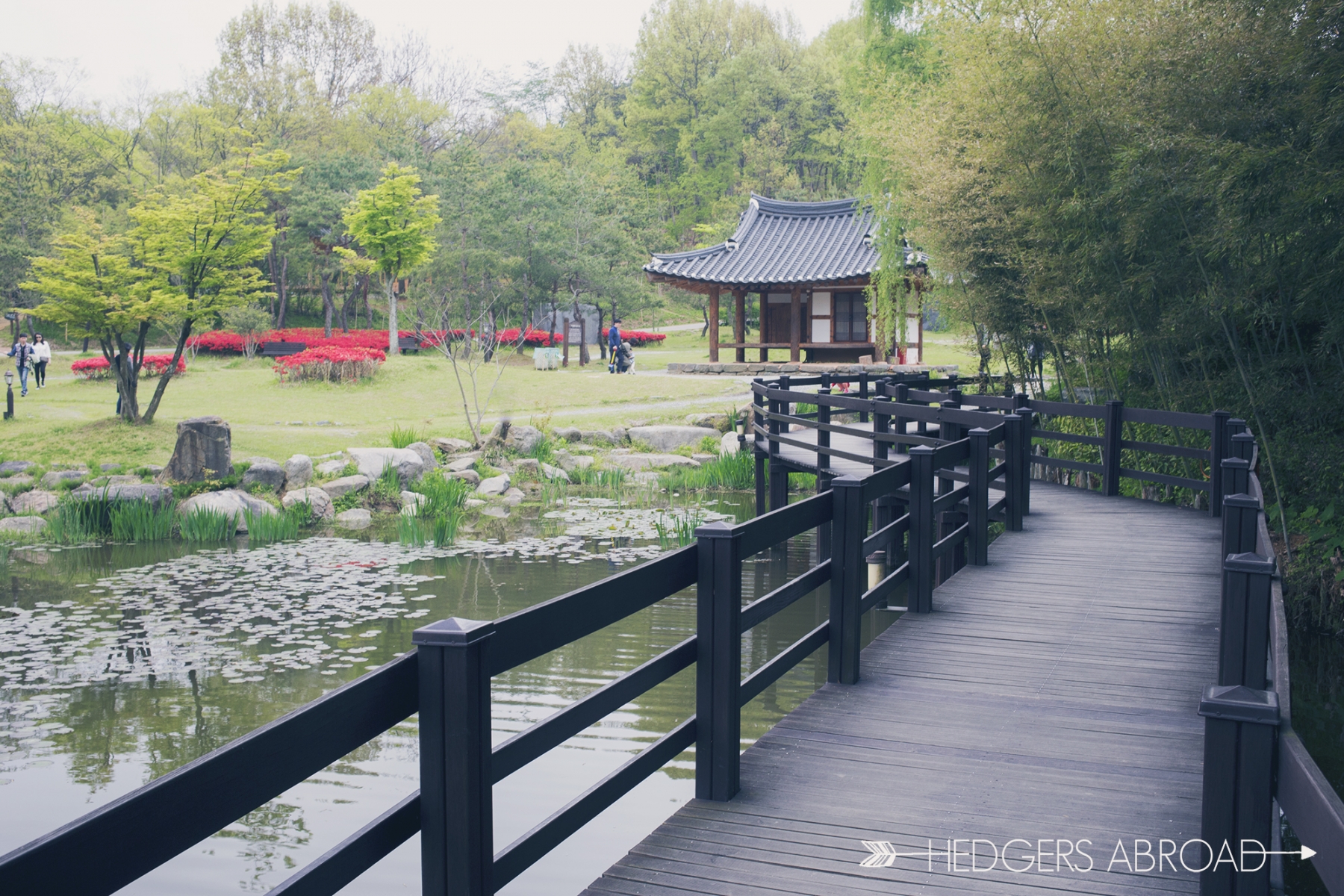
Located behind the Juknokwon Bamboo Garden, this former Confucian School is a gorgeous spot to relax after hiking through the bamboo forest. With stunning architecture and water elements that form a current of peaceful serentiy, Hyanggyo is a lovely place to spend an afternoon and allow for the crowds to subside. Colorful flowers, lounge chairs, ponds, and even a hanok cafe is all available to visitors. We arrived at the bamboo park just after lunch (one of the busiest times to see this area) and were disappointed by the crowds but were pleasantly surprised by the quickly thinning crowds as we spent about an hour sitting on a bench overlooking the beautiful pond sipping our coffees.
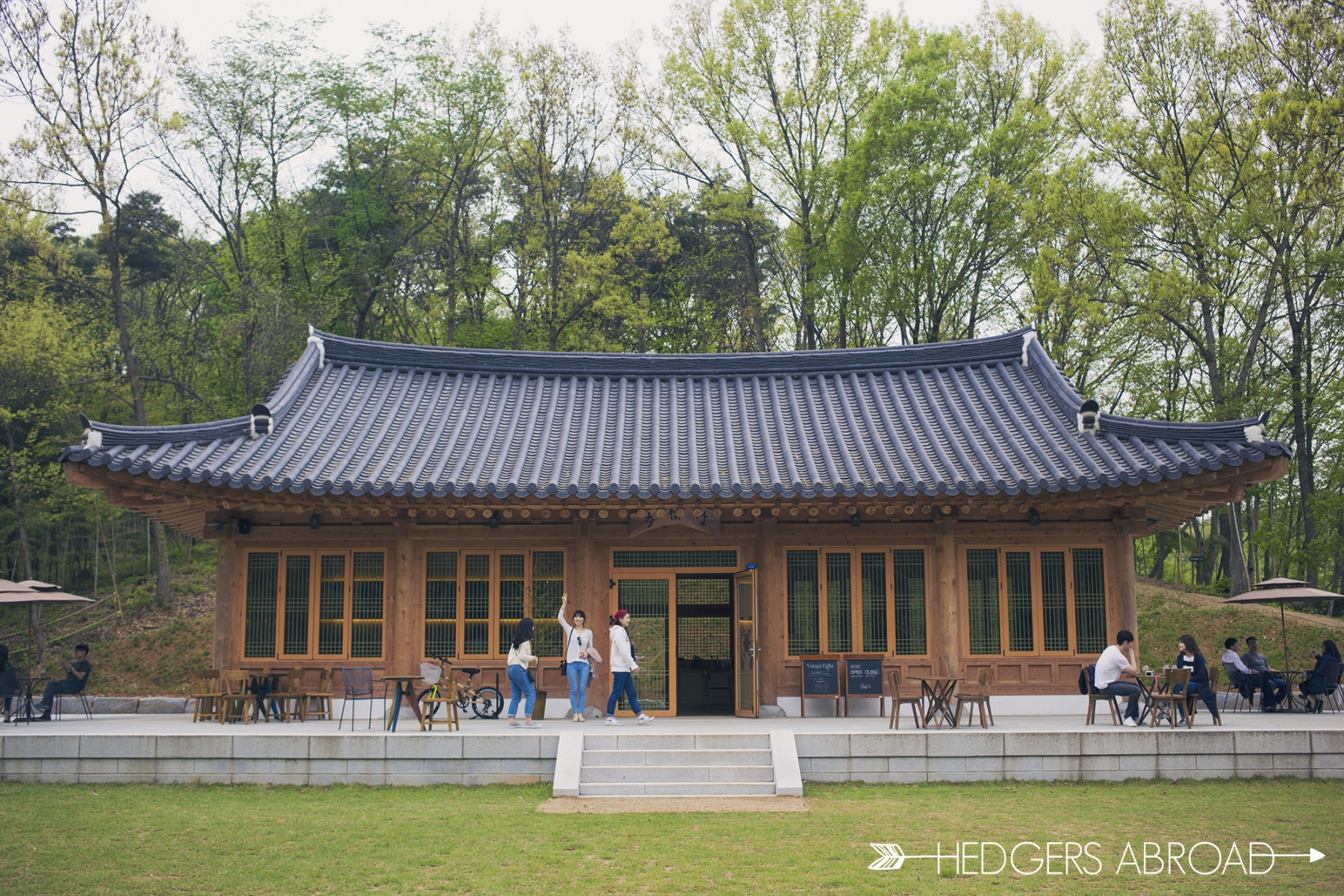

5. Soswaewon Garden (소쇄원)
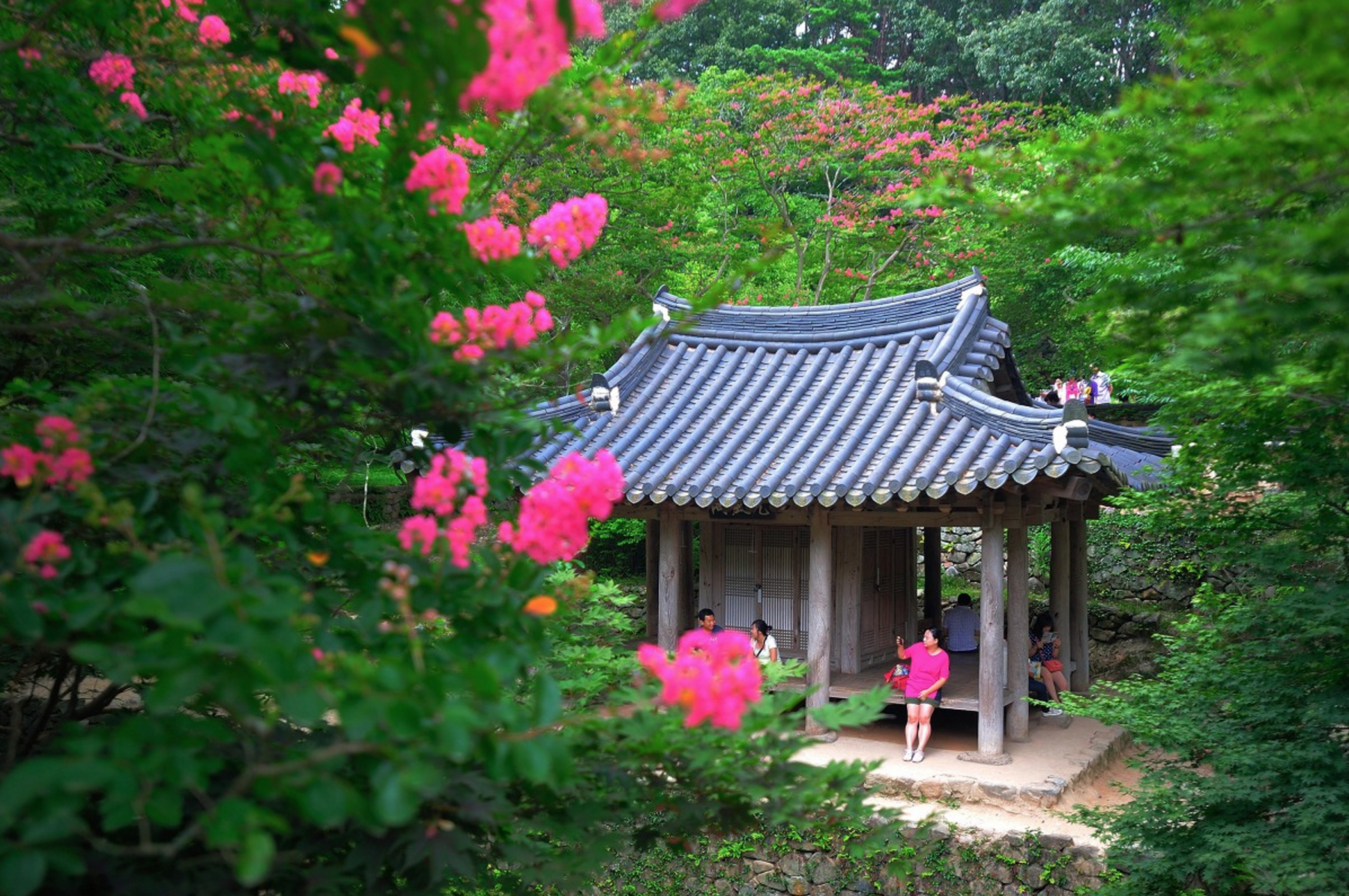
Probably the most relaxing of all the places we’ve chosen to feature in this post, Soswaewon is a beautiful traditional garden the climbs along a stream into the mountains and away from the stress of the surrounding city. The symbiotic relationship between the structures and nature present a harmony not commonly found in a country of 50 million people. The log bridge crossing the stream feels as if it could be the same as the original dating back to the Joseon dynasty and the whole gardem feels to be in perfect balance with nature, miraculously preserved for so many years. Home to bamboo groves and peach trees alike, Soswaewon Garden is a lovely trip just outside of both Damang and Gwangju.
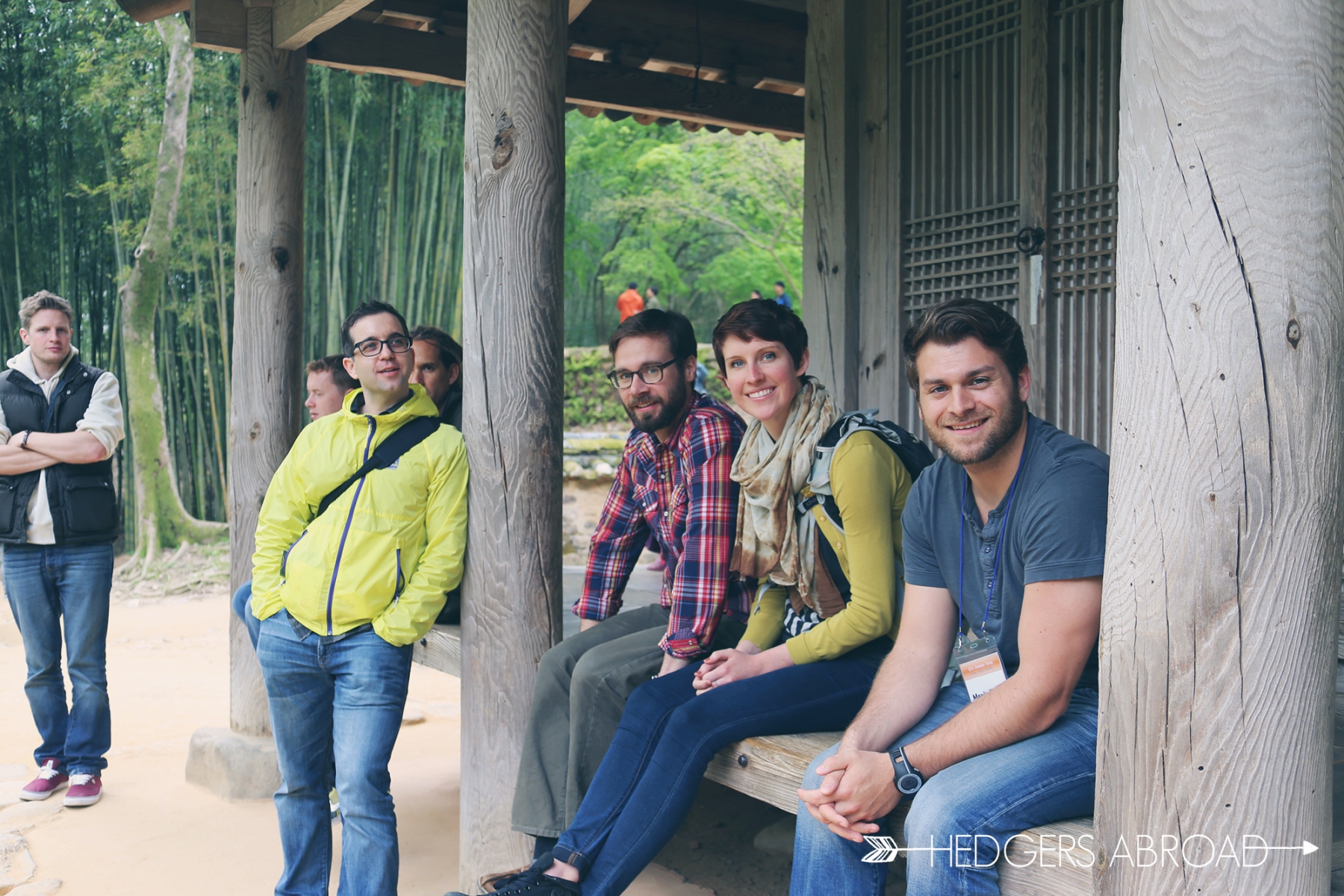
Bonus Things to See in Damyang
Korea Bamboo Museum (한국대나무박물관)– This museum highlights the importance of bamboo in Korea throughout its history and today.
The Damyang River, itself, has a beautiful park and many restaurants where you can get pajeon and makgeolli surrounded by the sounds of a gently flowing river while shaded by rustling leaves.
Several State-Designated Treasures can be found in Damyang for history buffs loving artifacts!
Disclaimer: I know full well that bamboo is not a tree and is actually a type of grass and not technically a tree.

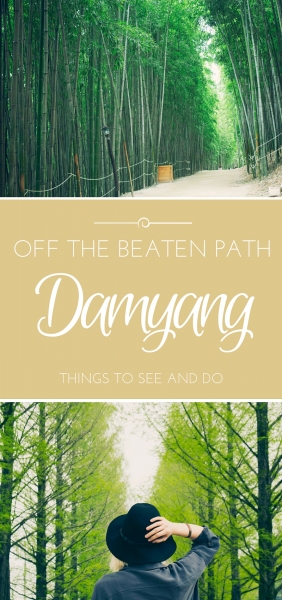

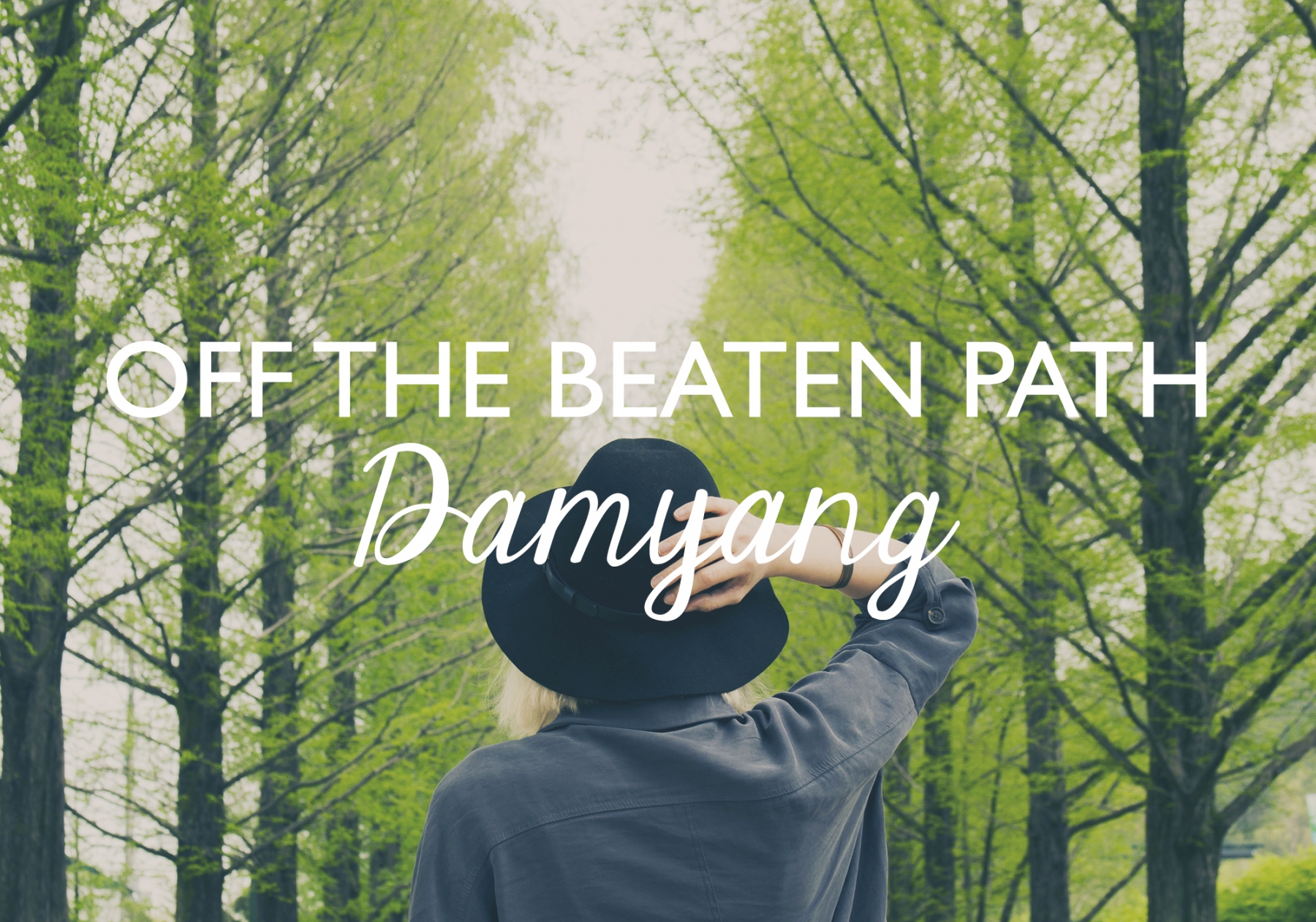






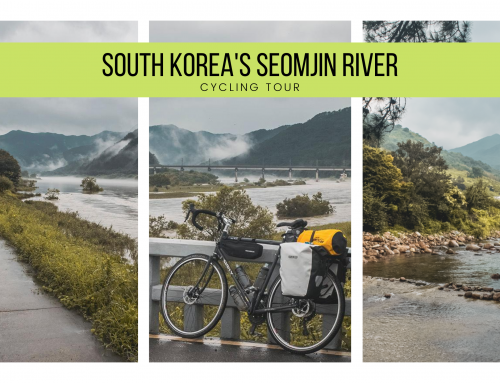
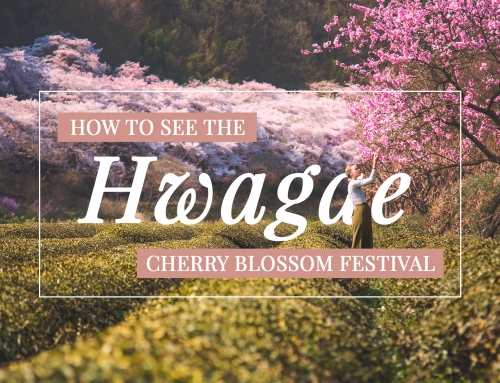



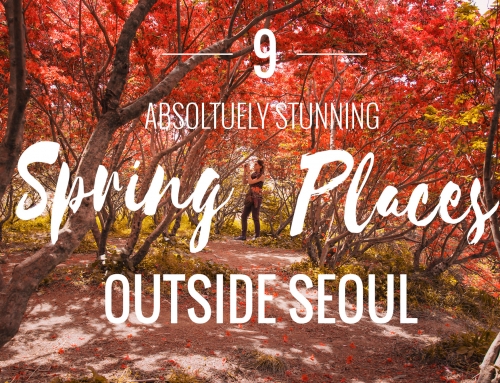
Thanks for posting guys! I have been following your blog for a few months now after stumbling upon it on Google. I really love all of your Korea focused travel tips and recommendations on places to see – they have been so helpful in planning our move to South Korea (yay!). Hope we can connect some more in the future – Katherine @ World Abound
Glad you stumbled upon our blog and that it has been helpful! Where will you guys be moving to in Korea??
We have to see Damyang before we leave! I wouldn’t mind seeing those sequoias either! Time is ticking and we are running out of time! Now seeing this post, we really have to make this place a priority! As always, I love how you guys captured the stunning beauty of these places with your photography. Thanks for sharing guys 🙂
It’s a truly beautiful place and we find more to see every time! You guys should definitely visit sometime before you leave. Let us know, maybe it’d make for a good HedgersAbroad/BoboAndChichi meet up!
Ooooh! Great post about a place I’ve been meaning to see for a while now! Great coverage. Love the photographs and your stylish hat! Can’t wait to see it for myself.
Wow. It seems you had lots of Fun during your visit to this area.
I love such green, quite, calm and fantastic environment.
I will definitely try to visit this area and enjoy the place over there.
Thanks for sharing this with us.
Thank you for sharing this! Your photos are beautiful, and this is just so informative. I just moved to Korea — so this is something I’d definitely add to my list of places to visit 🙂
Welcome! And we’re glad you enjoyed our post! Damyang is a beautiful city with a lot to offer anyone looking to get away and love manicured nature. Let us know if you have any questions about the area- we’d be happy to help you out.
I was invited to go to this Damyang Festival last year but didn’t really give it much thought. The photos are amazing. It makes me wish we should have gone there.
This is an awesome guide and definitely captures the essence of the place. I visited Damyang a few years ago in May and it was so lovely. The pin is stunning as well! Always enjoy reading your posts and looking through your photos.
Oh how wonderful! Your photos are always so dreamy. I’ve been to Damyang a few times to visit a really great Airbnb home (The Damyang House) as they are dog friendly and allow my bouncy pup to stay there, but I have yet to explore the bamboo forests!
I definitely need to make a trip there before we leave Korea.
Thank you for showing me yet another great place to explore here in Korea!
You’re making me feel all nostalgic. I used to live in Gwangju and I loved visiting many of the places that you listed. My all time favorite was the Bamboo forest. There is something so peaceful and serene walking through it. There is also a cute cafe and restaurant there.
My boyfriend lives in Damyang and I loved going to the Bamboo Forest! The other stuff around there is amazing and the next time I visit him, I’m going to make him take me to all those amazing places too! Sometimes Koreans don’t know everything. 😉
Hi, i just stumbled upon your blog while searching for places to visit in Korea. I’m really intrigued by the lush greeneries of Damyang. Would it be possible for you to guide me on making my way from the Bamboo forest to Metasequoia-lined Road? I have googled but there doesn’t seemed to be much concrete info. Thank you.
Hi! I would suggest that you just get a taxi from one place to the other. When you get into the taxi, just show the driver the name of the place in Korean and you shouldn’t have any problem!
[…] […]
[…] get the bulk of South Jeolla’s focus, Damyang is a city especially known for its trees. Damyang has one of the most beautiful bamboo (we know it’s actually grass) forests in South Korea, as […]